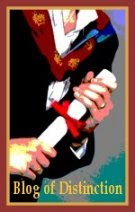
- Never go around anything you can jump over or wiggle under.
- Noxious materials exist to be felt and experienced first hand.
- To that end, any surface becomes positively embellished when caked in ooze.
- All creatures exist solely for our amusement.
- Everything—and I mean everything—is edible.
I feel confident in asserting these conventions because they so clearly dictate Ari’s behavior in the woods. She has come to find great delight in wiggling under logs and splashing through puddles; any puddle playing home to another animal or two is an absolute windfall for the pup. For my part, I’m doing better with the wiggling and squelching—and I’m even mostly amused by both, provided a hot shower awaits shortly after.
Even still, the last of these canine rules has me concerned. As the snow disappears from even the shadowiest places, two seasons of potentially edible treasures have emerged. Each walk, Ari returns from a brief foray into the brush with a new example of what lies just beyond the trail. A few days ago, it was an entire piece of breakfast pizza: an enormous, congealed palimpsest of dough, eggs, cheese, and sausage left by a winter hunter. It’s a useful reminder for me that this land is far from pure wilderness. For Ari, it’s pure heaven.
Once free from the underbrush, she side-stepped wildly with this forest booty—which was considerably bigger than her head. She walked awkwardly, trying to balance her small frame against the huge slice, and then tripped over the dragging tip of the pizza. As she did, her little back legs splayed out, causing her to roll to a stop only after she was well out of reach of the pizza. I snatched it up and tossed it, Frisbee like, into the woods, then promptly attached the puppy to her leash so that she couldn’t go off in pursuit.
It took hours for her to forgive me. And in that time, I think she might have been plotting new tactics for maintaining her forest booty. If so, the strategizing seems to have worked.
On our walk yesterday, Ari remained out of sight longer than normal. I began to worry, calling her name and fearing that she had either gotten lost or into trouble. Luckily, she is a good student in school and mostly understands recall. At the sound of her name, she bounded out of the woods, dragging along with her an entire leg of a white-tailed deer (Odocoileus virginianus). This find—which spanned from thigh bone to hoof—measured nearly three feet long and was massive by puppy standards. It, unfortunately, is not a topic we have covered in class.
Even still, Ari beamed with her find. “Look!” she seemed to say, “Look at this!! We can eat off of this thing for a whole week!!!”
I wanted to appreciate her enthusiasm and the thoughtfulness behind her desire to share. Still, I found it impossible to overcome my very human response to this festering limb: yuck. It may not have been a medieval plague victim on a corpse cart, but this leg certainly headlines my list of undesirable dinner options. I pull rank and disobey my primary directive: today, I get to dictate our time in the woods. And that time will most certainly not include a rotten deer leg.
Ari seemed both perplexed and offended when I demanded that she let it go. As Don Hanson explained to me during our first meeting, dogs are opportunists. If they see food, they need to eat it. Now. Leaving behind as big a find as this isn’t just poor form, it could be tantamount to suicide under extreme conditions. Ari’s hardwiring isn’t about to let that happen. I know this. But my disdain for decomposing deer parts isn’t about to let her bring it with us. So I resort to the theory that socialization trumps all else. I do my best to look disapproving. This is not all that difficult, since the deer leg looks like another prop from that zombie movie, and I’m more than leery of getting anywhere near it.
Ari hesitates slightly when she sees the frown on my face—hasn’t she just brought a delightful treat for us to share? She raises an eyebrow and looks hurt, almost. I refuse to be wooed by the puzzled expression and fetching blue eyes. “No, Ari.” I say firmly. “No.” As I repeat myself, I move slightly towards her, forgetting her mastery of my body language. The combination of the word “No” plus my forward movement has already resulted in confiscated breakfast pizza; Ari isn’t about to make the same mistake twice. As I walk towards her, she bolts, trailing the deer leg awkwardly behind her. She doesn’t go far, but she creates enough distance between us to ensure I’m not going to rob her of her deer leg. I stop and sigh. As I do, she stops as well, eyeing me over the enormous leg, which still hangs comically from both sides of her jaw. I take another step forward, but she can read my expression and knows that I’m still not about to revel in this ghastly treasure. She bolts again.
I am growing frustrated and yet I persist, knowing perfectly well that I will get the same result. I want her to drop this deer leg—both because it is disgusting and because I am under the mistaken assumption that my dog should know to obey me. Ari doesn’t accept either of these premises, however. And so, on and on we go until, finally, the brittle joints of the deer leg give way and it crumbles into three separate parts. As it does, we both stare at the leg, wondering what will happen next. In a tactical error, Ari reaches for the hoof, which now lies detached from the rest of the leg. In spite of myself, I feel smugly delighted: by my standards, this is the least offensive part of the leg; by dog standards, it’s undoubtedly the least useful—or pleasurable. Emboldened by what I take to be my small victory, I stand in front of the remaining leg, guarding it as my own. I don’t know why I do this; it’s certainly not a conscious decision. And yet somehow—perhaps through my own instincts—I determine that this is the appropriate response for my aims. Ari does, too. Sensing that I have laid claim, she abandons her attempts and, instead, makes her way towards the car, pretending she is satisfied with the hoof. One hundred yards later, I see it resting unceremoniously on the trail, forgotten by the puppy.
I will take this small victory. And with it, I will a sixth principle to my caninaturalist manifesto: all is fair in dog and war.


















